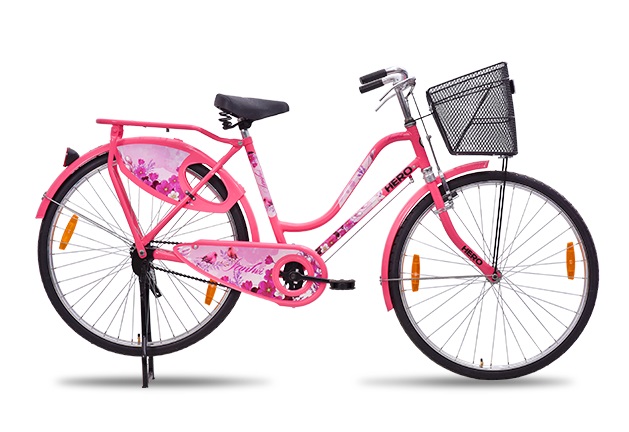The Rise of Women Cycles in India: More Than Just a Ride

Strong 8k brings an ultra-HD IPTV experience to your living room and your pocket.
In the vibrant tapestry of India’s cultural and social evolution, few symbols are as quietly revolutionary as the humble bicycle. Once seen primarily as a tool for rural transportation or children’s recreation, cycles in India have steadily evolved into emblems of mobility, independence, and progress. Among the most remarkable aspects of this evolution is the growing visibility and importance of women cycles, bicycles specifically designed, marketed, and embraced by women across urban, semi-urban, and rural landscapes.
This article explores the rise of women cycles in India, their transformative power in the lives of women, and how these two-wheelers are catalyzing deeper changes in gender roles, mobility, and economic participation. This journey is more than just a ride; it is a powerful movement toward equality and empowerment.
The Historical Backdrop: A Slow but Steady Pedal
Traditionally, cycling in India was male-dominated. Bicycles were associated with working men, factory laborers, postmen, or students commuting to school. For a long time, cultural norms and logistical challenges limited the visibility of female cyclists, particularly in conservative or rural settings. Social expectations, concerns about safety, and a lack of infrastructure further compounded the challenge.
However, as education spread and economic development touched new corners of India, a slow shift began. NGOs, governments, and social enterprises started initiatives aimed at giving girls bicycles to access schools. These programs became the seeds from which today’s widespread adoption of women cycles sprouted.
The Health and Wellness Revolution
India has seen a growing awareness around health and wellness in recent years, and cycling has found its place in this trend. The health benefits of cycling, improved cardiovascular fitness, muscle strength, joint mobility, and mental well-being are well-documented. For women, who often face time constraints and caregiving responsibilities, cycling offers a convenient, low-cost way to stay fit.
Morning cycling groups and fitness clubs across India now report increased female participation. These are not just fitness meetups; they are communities fostering solidarity, confidence, and a sense of collective empowerment. For many women, joining such groups is their first step toward reclaiming public spaces and prioritizing self-care.
The Design Evolution of Women Cycles
For women cycles to gain widespread adoption, product design had to evolve. Early bicycles marketed toward women were often nothing more than smaller, pastel-colored versions of male bikes, sometimes equipped with baskets and step-through frames. However, recent years have seen a more thoughtful approach to bicycle design.
Today’s women cycles offer ergonomic benefits tailored to female anatomy, adjustable saddle heights, shorter reach lengths, and lightweight frames for better handling. Brands in India have also started collaborating with female cyclists and designers to ensure practical, aesthetic, and performance needs are met.
Cultural Shifts and Symbolism
The surge in women cycling is not just a functional shift; it’s a cultural statement. In many parts of India, seeing a woman ride a cycle especially alone, is still a bold act. It challenges long-standing gender norms that associate femininity with passivity, dependence, or restricted movement.
When women claim the streets on their bicycles, they also claim visibility, agency, and freedom. These acts may seem small, but they ripple across communities, gradually dismantling stereotypes. In urban settings, cycling has become a symbol of eco-conscious, modern femininity. In rural areas, it's a symbol of courage and aspiration.
Celebrities, social influencers, and women athletes are also contributing to this narrative. Their endorsements and personal stories often inspire others to start cycling. Campaigns like "Pedal for Change" aim to make cycling aspirational for girls and women across age groups.
Infrastructure and Safety: Challenges That Remain
Despite the progress, significant hurdles remain. One of the biggest barriers to increased cycling among women is infrastructure or the lack thereof. Safe cycling lanes are rare, even in major cities. Poor road conditions, lack of street lighting, and chaotic traffic make many women think twice about riding a bicycle.
Safety concerns are particularly pronounced. In addition to traffic risks, women cyclists often face harassment and eve-teasing, especially in less crowded areas or during early morning/late evening hours.
To truly unlock the transformative potential of cycles in India, policymakers must prioritize gender-sensitive urban planning. This includes dedicated cycle lanes, well-lit routes, cycling parking spaces, and public awareness campaigns promoting respectful road-sharing behavior.
Digital India and Online Access
With the increasing digitization of retail, buying bicycles has also moved online. The availability of women cycles through e-commerce platforms has played a role in expanding access, especially for those in Tier 2 and Tier 3 cities. These platforms allow users to browse, compare, and purchase bicycles with ease, often at competitive prices.
Women, particularly younger users, are now more comfortable exploring brands and making decisions independently. This shift is not just about convenience—it’s about ownership and empowerment. Buying a cycle becomes a personal decision, driven by self-care, ambition, or utility, rather than tradition or necessity.
Moreover, digital campaigns targeting women through social media, blogs, and YouTube channels are playing a crucial educational role, explaining how to choose a bike, sharing safety tips, and offering maintenance advice. These digital touchpoints create an ecosystem that nurtures female cyclists.
A Catalyst for Broader Social Change
Perhaps the most remarkable aspect of this movement is how the rise of women cycles is acting as a catalyst for broader change. When a woman cycles, she not only transforms her own life but also influences her family and community. Children, especially girls, grow up seeing cycling as normal, not gendered. Men in families and communities also adapt, helping maintain the bicycle, encouraging rides, or joining in.
Such shifts, though gradual, are profound. They encourage a more equitable division of household responsibilities, reduce gender-based mobility gaps, and nurture generations of confident, independent women.
In the grand journey of social progress, few tools are as unassuming yet as powerful as the bicycle. For women in India, cycling is proving to be more than a means of movement, it’s a metaphor for freedom, health, courage, and equality. The growing embrace of women cycles is painting a hopeful picture of a nation where gender doesn’t determine mobility, opportunity, or dreams.
As cycles in India roll through urban streets, dusty rural roads, and bustling lanes, they carry with them more than just riders. They carry stories of change, quiet revolutions happening one pedal stroke at a time.
Note: IndiBlogHub features both user-submitted and editorial content. We do not verify third-party contributions. Read our Disclaimer and Privacy Policyfor details.







